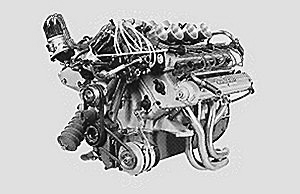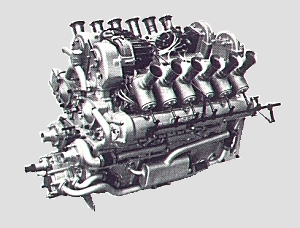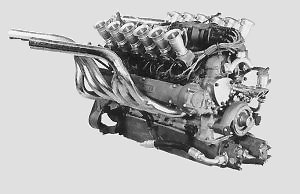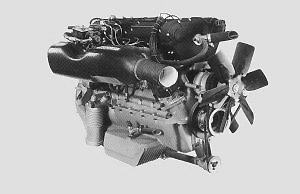LUCAS INJECTED ENGINES
Maserati Engines
|
ENGINE TIPO 5000
GT |
|
|
One of the greatest Gran Turismo, in the true sense of the words, was the 5000 GT. When Maserati officially (many privateers continued to race with unofficial factory support) retired from competition in 1957, they were approached by the Shah of Iran with a view to building a 'road-friendly' version of the 450S race car. Thus in 1959 was born the 5000 GT, the fastest road car in the world. The 5000 GT engine was originally fitted with four Weber 45IDM carburettors and from 1960 with the Lucas indirect fuel injection system, now standard equipment for the 3500GT. |
|
|
ENGINE TIPO 8 Year of production: 1963 V12-cyl @ 60° 1493.3 cc engine 4OHC with two valves per cylinder Bore 52.2mm and stroke 52mm Compression ratio 12.0:1 Power output 200bhp @ 12000 rpm Induction system by Lucas indirect fuel injection system. |
 |
|
When in 1961 engine size was reduced to 1500 cc for Formula 1, Giulio Alfieri experimented with the idea of an engine being mounted in a transverse rear position. The resulting engine was designed and built in 1963 and developed in 1964 to run in the F1 World Championship reserved for the 1,5-litre single-seater. The 60° V-12 engine with transmission in unit was designed to be mounted in a transverse rear position, a really unusual and new design for that period. This V-12 engine underwent long delays in its preparation, was bench tested for the first time in 1963 and after further delays was abandoned in 1964 when for the 1966 Grand Prix season a new 3-litre formula was to be introduced. However, this Maserati technology was later adopted by Honda for its F1 car and by Lamborghini for its Miura. |
|
|
ENGINE TIPO 9 |
 The early V12 with 12 Dell'Orto carburettors |
 The first Maserati V-12 engine was designed in 1956 for the 350S sports car and the Tipo 250F 2T single-seater. In the 1957 season a 250F powered by the V12 made its debut at the French GP and later that year Jean Behra led the Italian GP at Monza before retiring with lubrication problems. Unfortunately Maserati retired from motor racing at the end of 1957 season and the V-12 engine was left undeveloped. Ten years later, bench tests were initiated using six Weber 38 IDM carburettors and dual ignition but after track testing at Goodwood, the carburettors were replaced by a Lucas indirect fuel injection system. This engine was adopted by the Cooper-Maserati F1 team and competed successfully winning GP of Mexico and the GP of South Africa in the 1966 and 1967 seasons, achieving second and third places in the 1966 F1 Championship with John Surtees and Jochen Rindt. During the 1967 season there appeared a new revised engine, the Tipo 10, with three valves (two intake and one exhaust) per cylinder. The Tipo 10 produced 380bhp at 9800 rpm and weighed only 171 kg but unfortunately proved to be 'too fragile' and after many retirements it was replaced mid-season by the Tipo 9 engine. |
|
| ENGINE
TIPO 3500 GT Years of production: 1961-1964 Straight 6-cyl 3485.3 cc engine DOHC with two valves per cylinder Bore 86mm and stroke 100mm Compression ratio 8.5:1 Power output 235bhp @ 5800 rpm Induction system by Lucas fuel injection. |
 |


1965 Maserati 3500 GTIS Sebring II

1967 Maserati Sebring Series II

